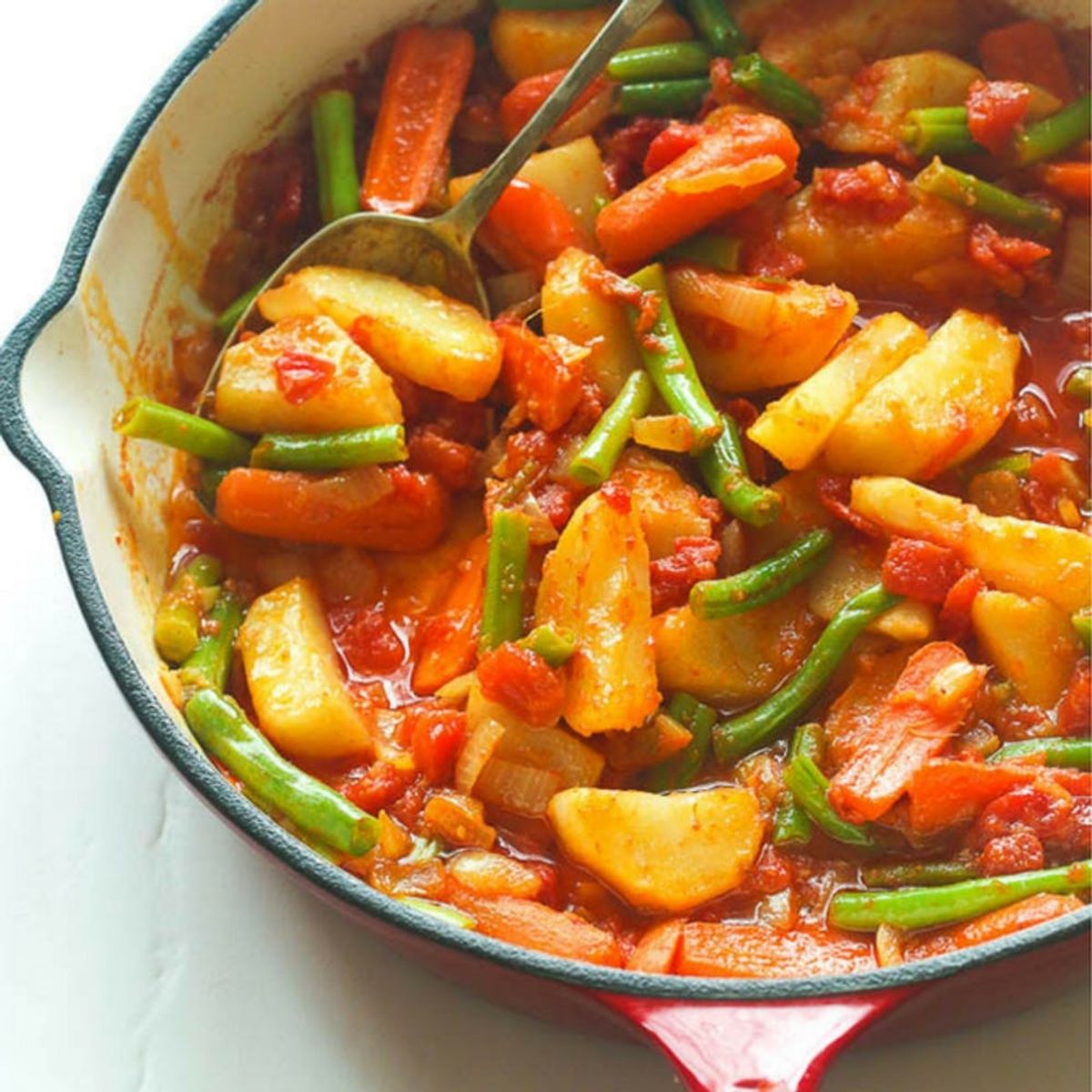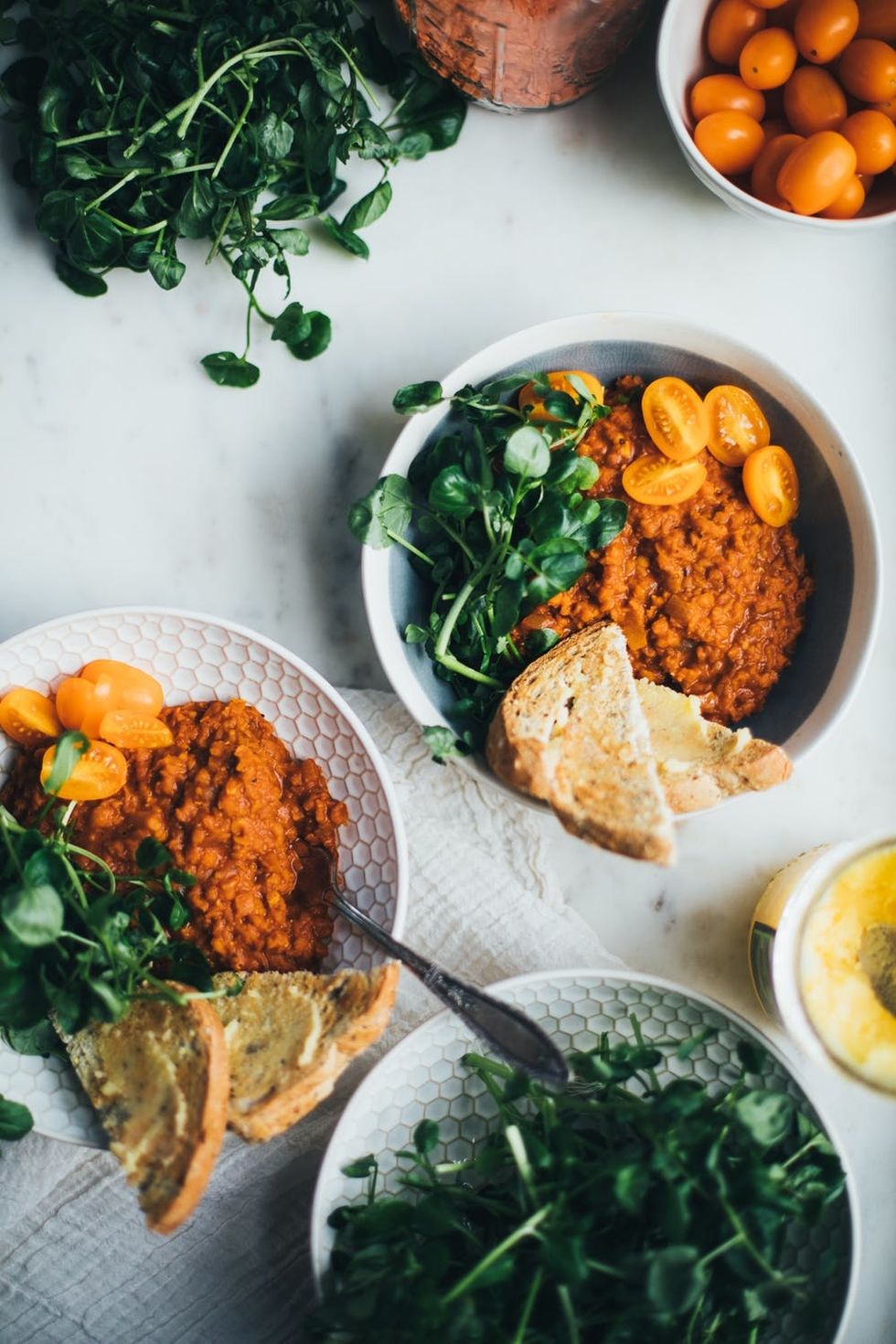Food you can eat with your fingers.
9 Ethiopian Foods That You Should Know About

If you live in a major city, chances are that you’ve already had the joy of experiencing Ethiopian food, but if you haven’t, it’s time to get acquainted — especially if you’re fond of vegetables and spices. A typical Ethiopian meal will consist of a variety of meat and vegetable curried stews (wats) and injera flatbread that is used as a utensil. Although in different parts of the country you will see the presentation vary, overall the ingredients and the preparation remain largely the same. If you don’t know where to start, you can’t go wrong with the bayenetu, a photogenic arrangement of vegetable wats arranged on a round of injera. To help you pick and choose to build your own smorgasbord, here are nine essential Ethiopian dishes.
Injera (Ethiopian bread)
At the base of every good Ethiopian platter there’s injera. This teff-based bread is made with fermented sourdough and is like a soft, spongy crepe onto which you can pile all your stews and curries. Its unusually sour flavor pairs perfectly with the chilies that many of Ethiopian wats feature.
Berbere spice mix
A dark red spice known as berbere makes a regular appearance in Ethiopian cuisine. It’s mellow yet aromatic thanks to the host of toasted spices, similar to Jamaican jerk spice rub. While this spice is made differently due to family recipes and taste preferences, typically it’s a combo of hot and mild chili peppers, cumin, garlic, coriander, basil, ginger, garlic, rue (a bitter seed), nigella, fenugreek, korarima (Ethiopian cardamom), ajwain (related to caraway and cumin), or radhuni (related to caraway but tasting strongly of celery). As some of these spices are unavailable in America, sometimes you’ll see substitutions with cardamom, allspice, nutmeg, cinnamon, caraway, or celery seed.

Mesir Wat (red lentils)
Mesir wat may be one of the most recognizable dishes in Ethiopian cuisine, made from red lentils and spiced with berbere, garlic, ginger, and onions. It’s kind of like spicy comfort food that you can eat with a spoon or a piece of injera.
Kik Alicha (split pea stew)
This popular stew will remind you of split pea soup. Just like the familiar version, it’s not very spicy, but it is incredibly creamy. Filled with onions, garlic, and split peas, the mild flavor actually pairs wonderfully with slightly sour injera.
Gomen (Collard greens)
Unlike many of the vegetable stews that are common in Ethiopian cuisine, gomen is made from collard greens, which are hearty and can withstand a bit of braising. That means that this stew has a lot of texture along with its flavor. Naturally vegan, because of its similar spice profile to Indian food, it also makes a great substitution for paneer if you’re making samosas.
Yataklete Kilkil (vegetable stew)
Like most Ethiopian dishes, this stew is spiced with cumin, garlic, and chili peppers. However, the beautiful thing about the dish is that although it generally features potatoes, it is up to the chef to decide what other vegetables to feature to round out this satisfying one-pot meal. If you’re really hungry, you can even serve it with chicken.
Ye’Denich Be’Kaysir Atakilt (potatoes with Pickled Beet Salad)
We usually think of beets as an oddly sweet vegetable at worst or borscht at best. The Ethiopians developed this sour salad made with a refreshing combination of beets and potatoes. Since it’s made with root vegetables, this salad is rather hearty so you won’t have to worry about going hungry. Plus, the pickled beetroot gives the salad a lovely rich red color, which makes it as appetizing to your eyes as to your taste buds.
Shiro Wat
Shiro tastes surprisingly complex yet is surprisingly simple to prepare. This staple dish is totally vegetarian as well as vegan and gluten-free. Made from chickpea flour and a variety of spices, this stew is slightly nutty and like most wats has a smooth, spreadable texture that makes it ideal to layer onto some injera.
Tikil Gomen (cabbage potato stir fry)
This cabbage dish gets a little extra life with a ton of wonderful spices like turmeric and ginger and gets some staying power because of the potatoes and carrots that are included. Don’t be surprised if you actually find that you love cabbage after trying this dish.
Do you have some beautiful photos of your Ethiopian dining experience? Share them with us @BritandCo.
(Photos via Will Frolic for Food and Immaculate Bites)



















